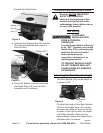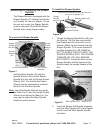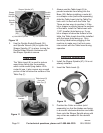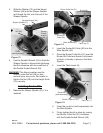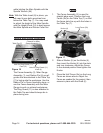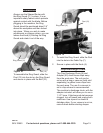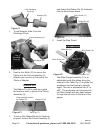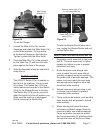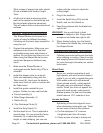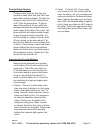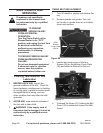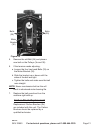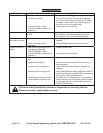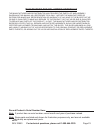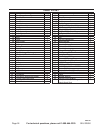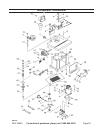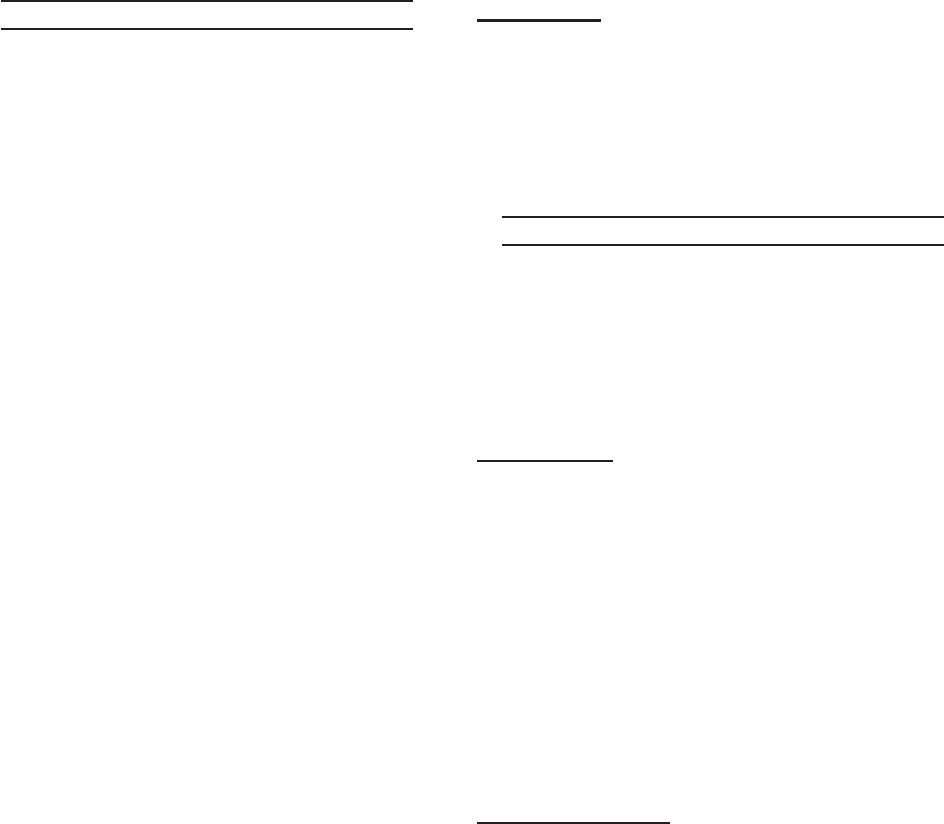
Page 18 For technical questions, please call 1-800-444-3353. SKU 32650
Other means of support are roller stands.
All are available from Harbor Freight
Tools.
A light coat of clear automotive paste 6.
wax can be applied on the table top and
the fence faces whenever necessary.
This will reduce friction and protect wood
surfaces.
General Operating Instructions
This Shaper/Router can be used in a
variety of ways for different functions.
Following are the basic steps needed for
using the unit.
Prepare the workpiece. Make sure your 1.
workpiece is as close to its nal size
as possible using saws and planers or
jointers. Do not make too heavy of a cut
when using the Shaper/Router or poor
results and dangerous kickback may
result.
Make sure the Shaper/Router is 1.
unplugged and the Switch Key (27b) is
removed.
Install the shaper cutter or router bit 2.
(both sold separately) along with the
Table Insert (8). Hand spin the blade to
make sure it will not come in contact with
the Table Insert.
Install the guides needed for your 3.
project. Guides you may need include:
Fence Assembly (2)a.
Miter Gauge Assembly (1)b.
Radius Pin (6)c.
Chip Discharge Chute (9)d.
Install the Ring Guard (11).4.
Set the depth of cut. This is adjusted in 5.
several ways. You can move the Fence
Assembly (2) or adjust the spindle
height, or when shaping, you can use
collars with the cutters to adjust the
cutting height.
Plug in the machine.6.
Insert the Switch Key (27b) into the 7.
Switch, and turn the Switch on.
Feed the workpiece into the blade from 8.
right to left.
WARNING! Use a push block to feed
stock into shapers or bits. Always feed
workpiece into blade from right to left.
When nished cutting, turn the Switch 9.
Off, remove the Switch Key, and unplug
the Shaper/Router.
Shaping and Routing Techniques
Following are some techniques that help
when shaping or routing. Consult routing
and shaping books and internet sources
for more thorough information on various
techniques.
Wood Grain
Since your machine operates at such
high speeds, with most woods it doesn’t
matter if you cut with or against the grain.
With woods such as r and redwood
(open grained woods), cutting against
the grain may give splintered, uneven
results. When you must cut against the
grain with such woods, make several
shallow passes; the nal and last pass
should remove 1/16” material or less.
Across the Grain
Splintering of the back edge will occur
when attempting cross-grain cuts. There
are two ways to reduce this problem:
Cut the workpiece 1/4” oversize a.
(lengthwise) and trim off excess.
Clamp a piece of scrap to trailing end.b.
REV 10e



